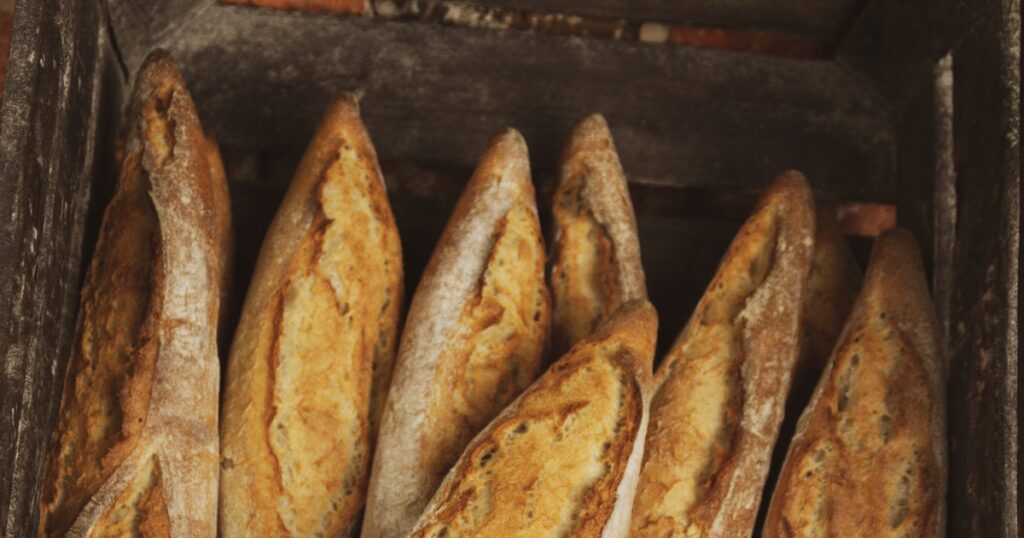The Anatomy of French Bread
When it comes to French bread, less is often more. The hallmark of traditional French bread lies in its simplicity—comprising mainly of flour, water, yeast, and salt. No additives, no preservatives, just the art of fermentation and baking. The absence of extra ingredients makes the crafting of French bread an artisanal endeavour that demands skill and patience. The dough must be mixed, proofed, and baked to perfection, ensuring a crusty exterior and a soft, airy interior. This unique combination makes French bread instantly recognisable and universally beloved.
The Quintessential Baguette
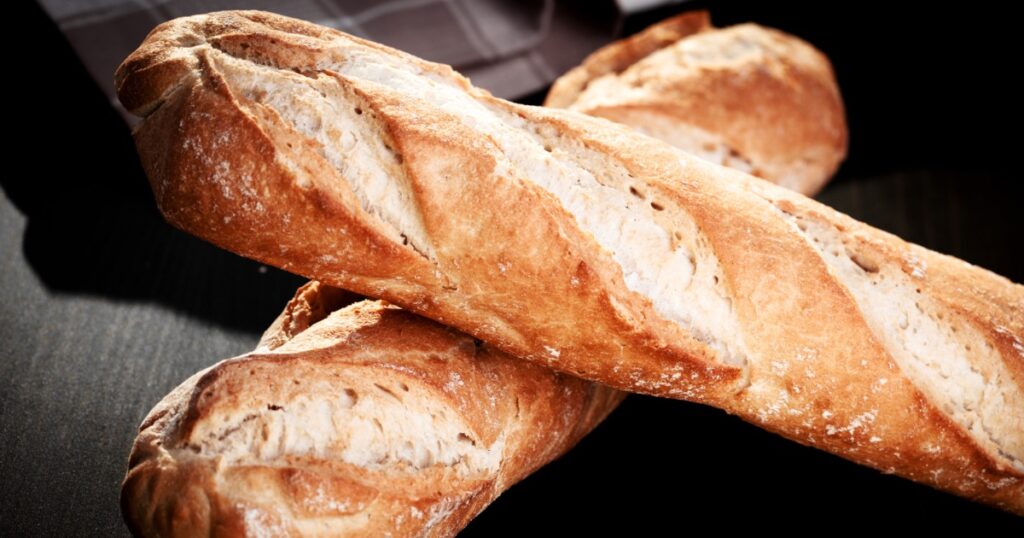
It would be almost sacrilegious to talk about French bread and not start with the Baguette. With its slender form, crisp crust, and fluffy interior, the Baguette is arguably the most iconic representation of French bread. But its significance goes beyond its physical form; the Baguette is a symbol of French culinary and cultural heritage. It is ubiquitous in French households and often the first choice for making sandwiches, crostinis, or simply to mop up a delicious sauce. Its simplicity makes it the perfect accompaniment for a variety of foods—from fine French cheeses to a simple slab of butter.
Bâtard, the Shorter Sibling
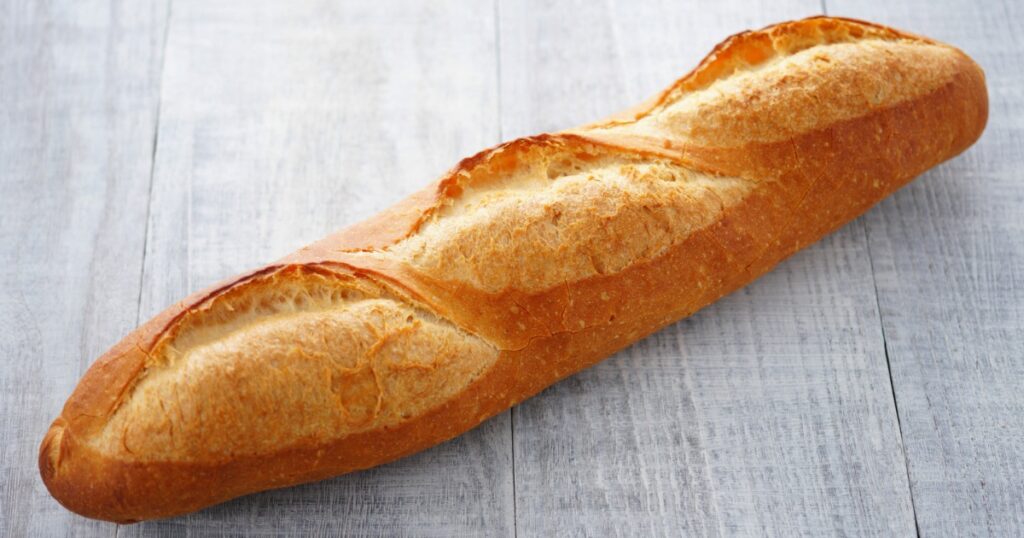
The Bâtard is essentially a shorter version of the Baguette, and it caters to those who love the taste and texture of the Baguette but are looking for a smaller portion. The Bâtard is versatile, and its shorter length makes it ideal for dinner parties or smaller households where a full-length Baguette might be too much. It offers the same crisp crust and fluffy interior, and it can be used in much the same way as its longer sibling—for sandwiches, as a base for bruschetta, or as a side with soups and stews.
Boule, The Rustic Round Loaf
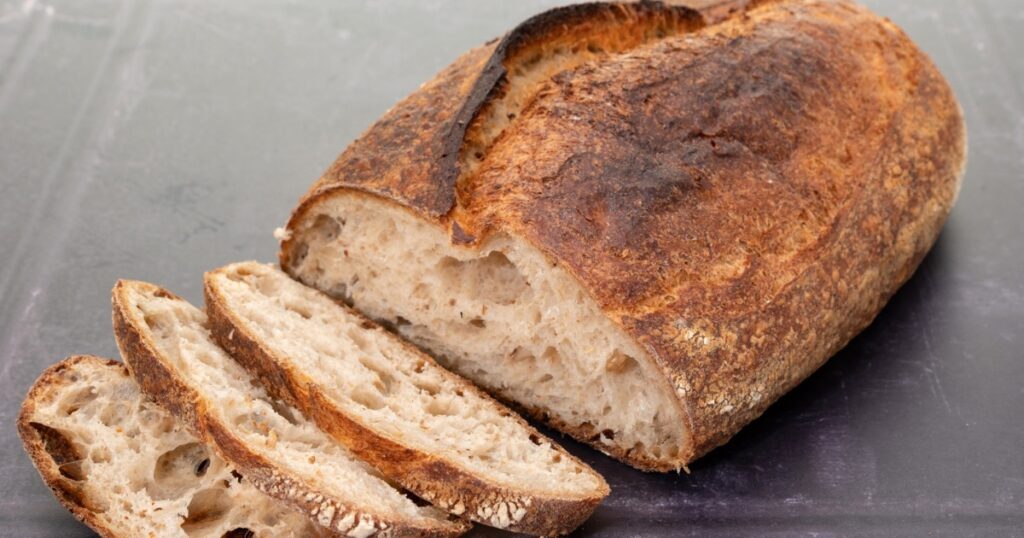
The Boule is a rustic, round loaf that embodies the spirit of traditional French baking. Like the Baguette, it’s often made with the same basic ingredients, but its round shape gives it a rustic charm that makes it perfect for casual, hearty meals. The Boule is often sliced thickly and used for rustic sandwiches or as the base for tartines, open-faced sandwiches that are a French specialty. Its shape also makes it ideal for hollowing out and using as an edible bowl for soup, adding an extra layer of flavour and texture to the meal.
Fougasse, The Artistic Bread
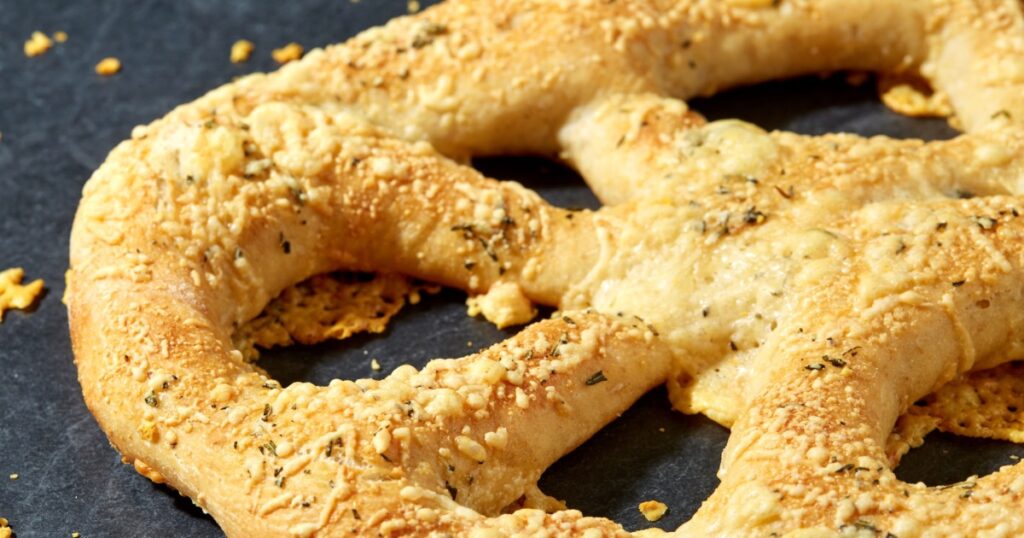
A bread with a flourish, Fougasse hails from the region of Provence and is known for its unique leaf-like shape. But Fougasse is not just about looks; its distinct form allows for a variety of fillings and flavours to be incorporated into the bread itself. From olives and herbs to sun-dried tomatoes and cheeses, each Fougasse can be a unique culinary experience. Traditionally served as an appetiser, this bread is often paired with dips or used to mop up the sauces of a hearty stew.
Pain de campagne
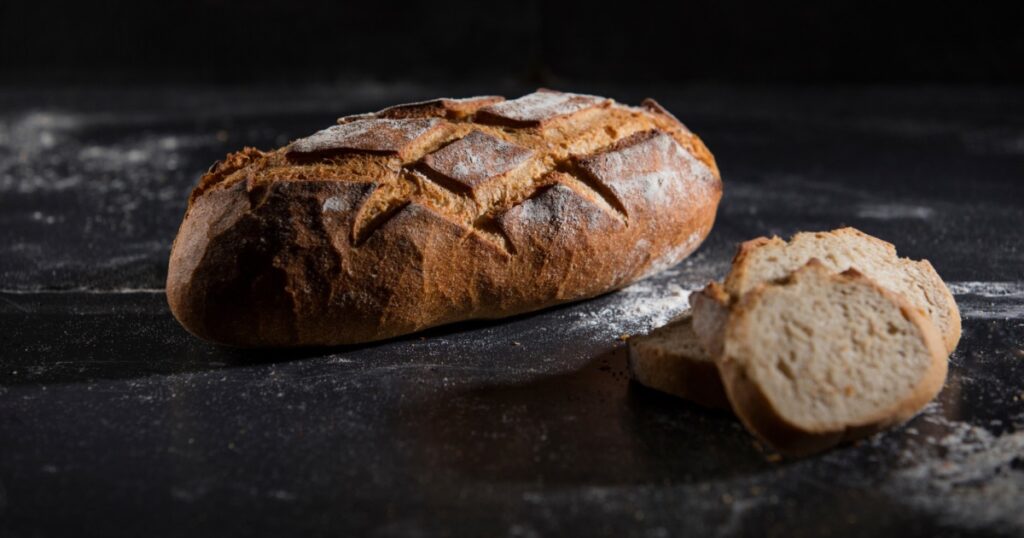
Pain de Campagne, often referred to as ‘French country bread,’ holds a special place in rural French households. Characteristically round or rectangular with a thick, rustic crust, this bread exudes nostalgia and tradition. It’s commonly made with a blend of white and whole-grain flours, and often, a sourdough starter is employed for fermentation. This results in a loaf that balances the lightness of white bread with the complexity and depth of whole grains. The inclusion of sourdough also adds a slight tang, elevating the flavour profile. Pain de Campagne is as versatile as it is delicious; it’s excellent for sandwiches, spreads, or simply enjoyed on its own with a smear of butter. When you break into a loaf of Pain de Campagne, you’re tearing into centuries of French rural tradition.
Pain Poilâne
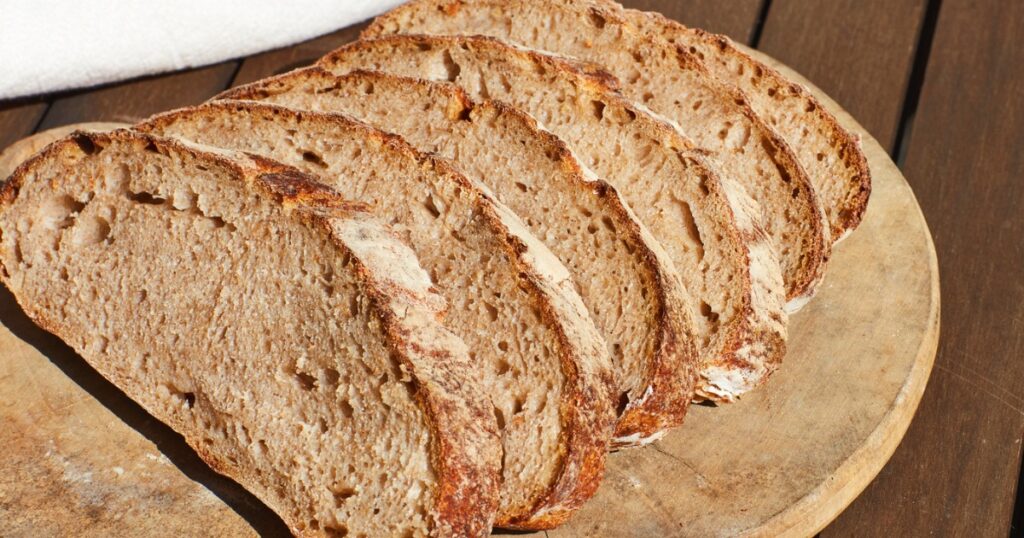
Poilâne is not just a bread; it’s a brand, a legacy, and a loaf that has global recognition. Originating from the renowned Poilâne bakery in Paris, this sourdough bread has a distinct tangy flavour, a dense but chewy crumb, and a thick, hearty crust. Made with a mix of white and whole-grain flours, this bread is often enjoyed with rich patés, quality butter, or fine cheeses, and has even been shipped around the world to satisfy international demand.
Flûte
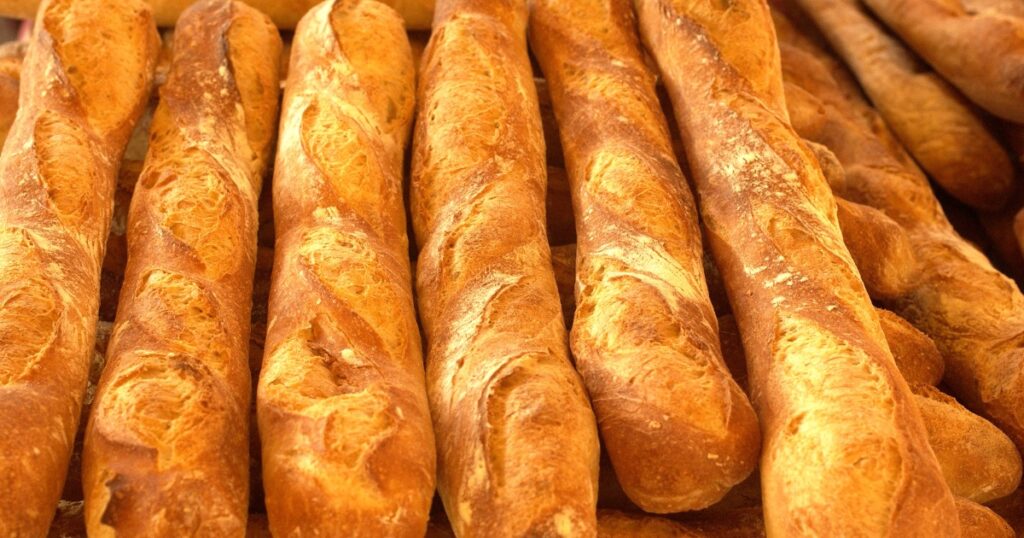
The Flute could be described as a Baguette’s elegant cousin. Like the Baguette, it is long and thin but boasts a more developed crust and a slightly chewier texture. Its diameter is larger, and its length can vary, giving it a distinctive look and mouthfeel. The increased crust-to-crumb ratio means that the Flute offers more of that crispy texture that fans of French bread adore. Traditionally consumed as a part of everyday meals, its shape allows for easy cutting into rounds, ideal for open-faced sandwiches or accompaniments to cheese and charcuterie. It’s an embodiment of the French flair for taking something simple and elevating it to a new level of sophistication.
Pain en épi
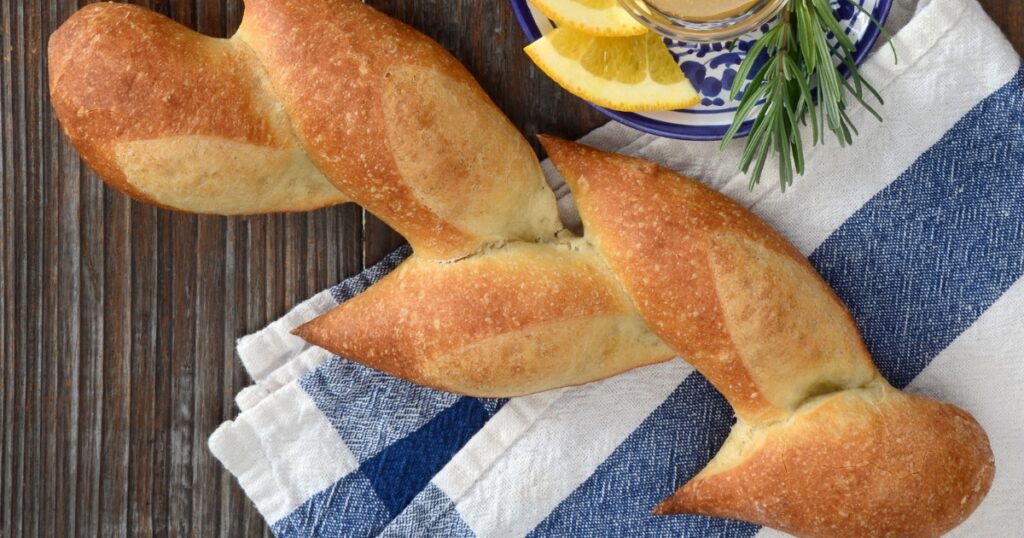
The Épi is another French bread variety that captivates both the eyes and the palate. Shaped to resemble a stalk of wheat, the Épi is not just a type of bread but a work of art, often featured at festive occasions like weddings or large gatherings. Bakers often craft Épi loaves as a tribute to the agricultural traditions that have given rise to France’s rich culinary culture. Its form doesn’t just add visual appeal; it also makes the bread easier to tear into individual portions. Beyond its aesthetics, the Épi offers the same crusty exterior and soft, airy crumb that French bread enthusiasts love. When you encounter an Épi, you’re not just indulging in a loaf of bread; you’re partaking in a slice of French heritage.
Brioche: The Sweet Side of French Bread
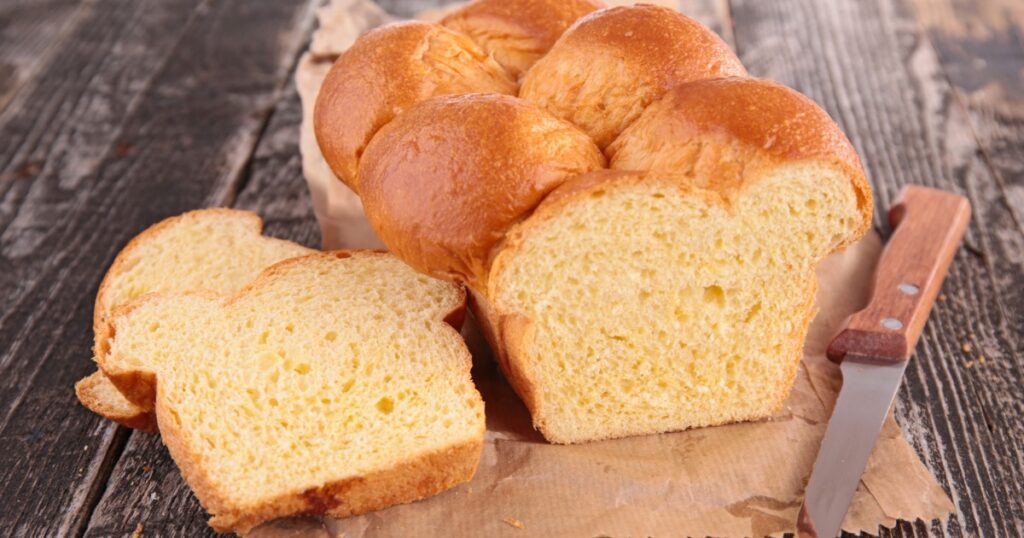
Brioche takes bread into the realm of the dessert. With its high egg and butter content, this bread is rich, sweet, and tender—almost like a pastry. Brioche is versatile: it can be enjoyed as a breakfast bread, used in desserts like bread pudding, or even incorporated into savoury dishes like gourmet sandwiches or burgers. Its buttery flavour and soft crumb make it a hit among both children and adults, and its sweetness offers a delightful contrast to the more savoury bread options in French
cuisine. Whether slathered with jam for breakfast or used as the base for a decadent French toast, Brioche is a bread that satisfies both sweet and savoury cravings in an extraordinarily elegant manner.
Regional Specialties
France’s diverse regions offer a plethora of bread varieties, each imbued with local flavours and traditions.
Pain d’épices
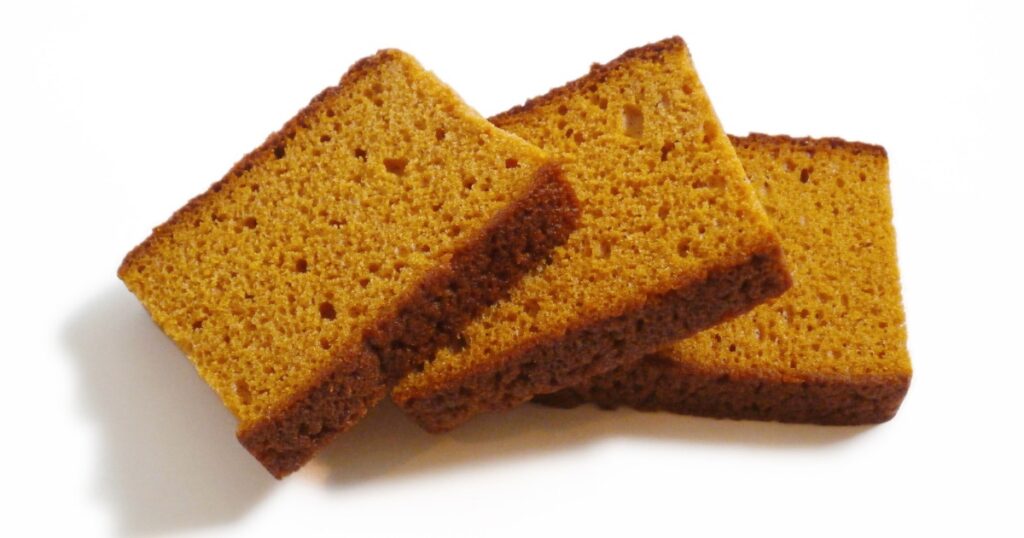
Hailing from the region of Burgundy, Pain d’épices is a spiced bread that often includes ingredients like honey, cloves, and cinnamon. While not a “bread” in the conventional sense, this specialty is more akin to a spice cake and is often enjoyed during the holiday season or as a dessert.
Ficelle
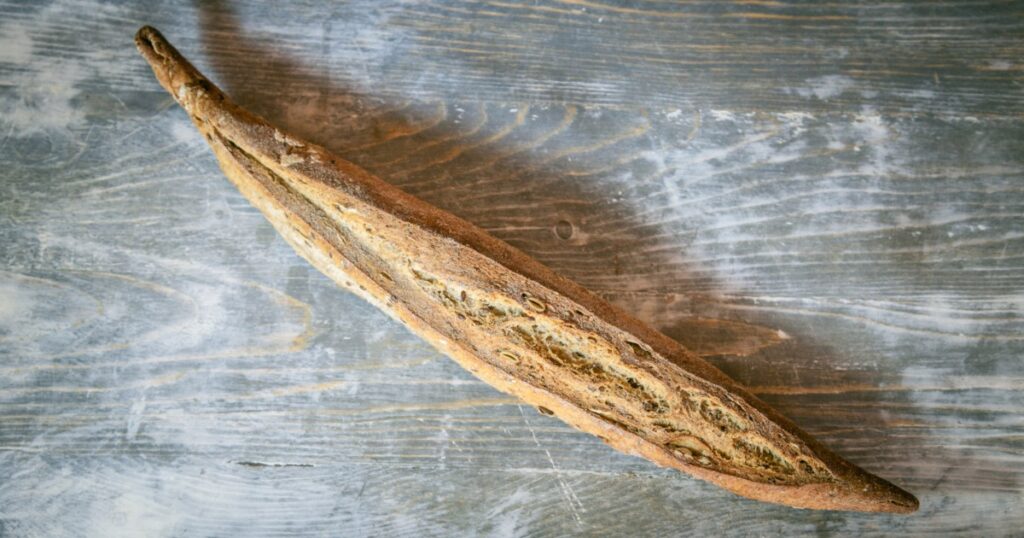
Literally translating to “string” in French, Ficelle is like a skinny baguette and is often consumed as a snack. Originating in the Île-de-France region, this bread is the perfect canvas for all kinds of spreads and fillings, from soft cheese to Nutella.
Pain aux Noix
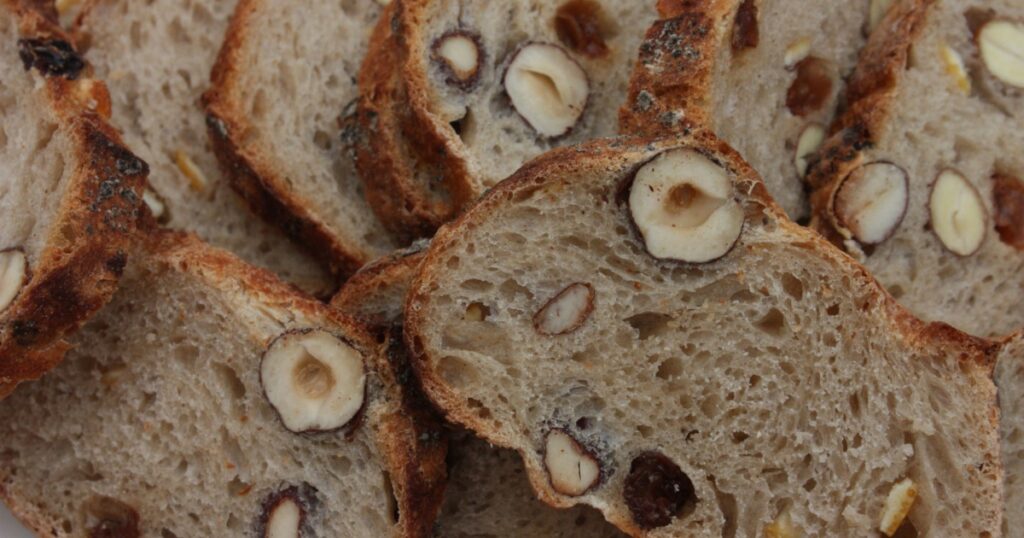
Coming from various regions, Pain aux Noix is bread studded with nuts like walnuts, hazelnuts, or almonds. This bread is popular in the South of France and offers a textural crunch and added nutrition.
Pain aux Olives
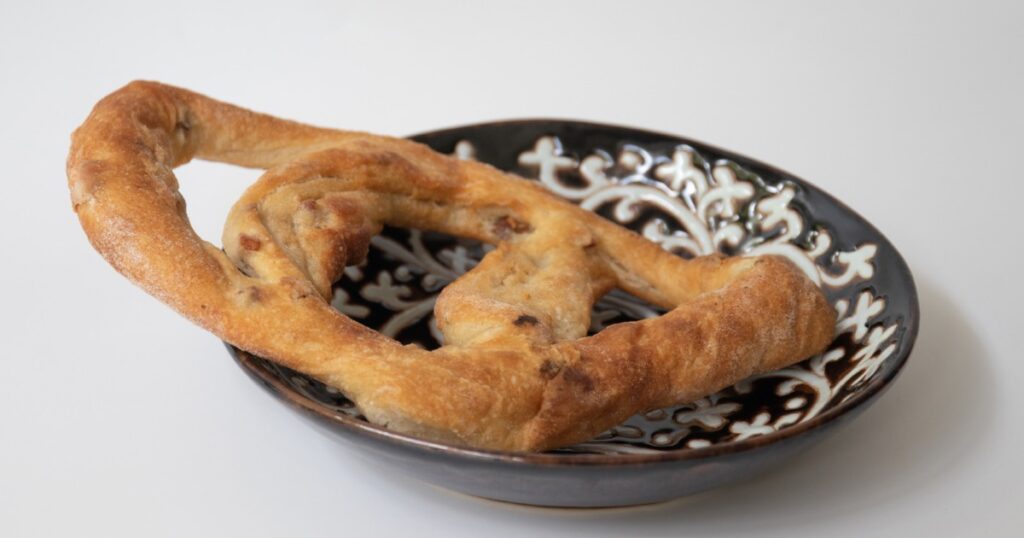
This is another Southern French specialty. Pain aux Olives is usually a white or whole-grain bread filled with green or black olives, and sometimes with the addition of herbs like rosemary or thyme. It’s a delightful representation of Mediterranean flavours in bread form.
Tourte de Meule
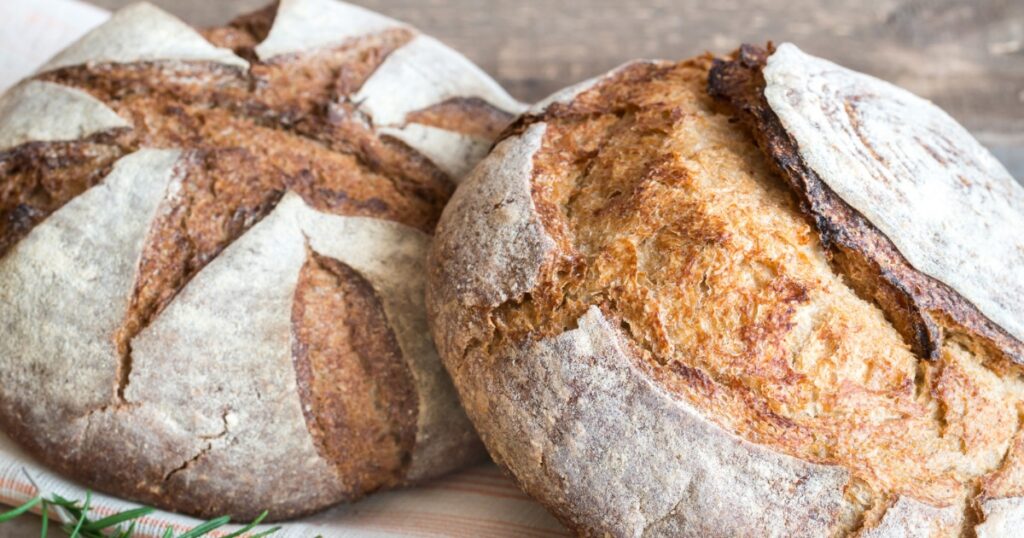
This bread hails from mountainous regions and is traditionally made with stone-ground flour, which gives it a distinctive, rustic texture and hearty crust.
Lesser-Known Varieties
France’s bread repertoire extends well beyond the ones that are globally recognised. Here are some lesser-known but equally noteworthy options:
Pain aux Céréales
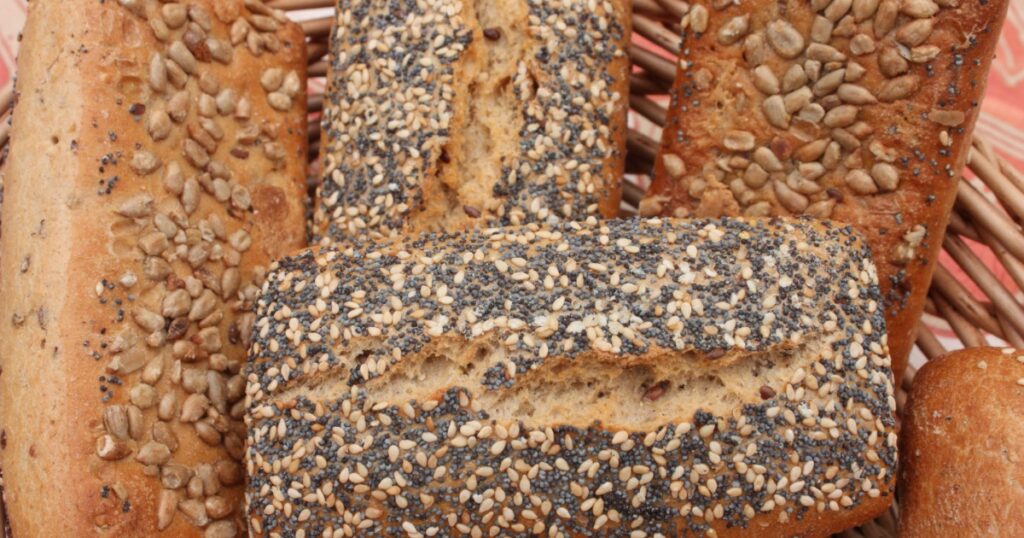
This is a multi-grain bread featuring a variety of grains and seeds, such as flax, sunflower, and sesame. Its complex texture and flavours make it a hit among those seeking a healthy yet tasty bread option.
Pain d’Alsace
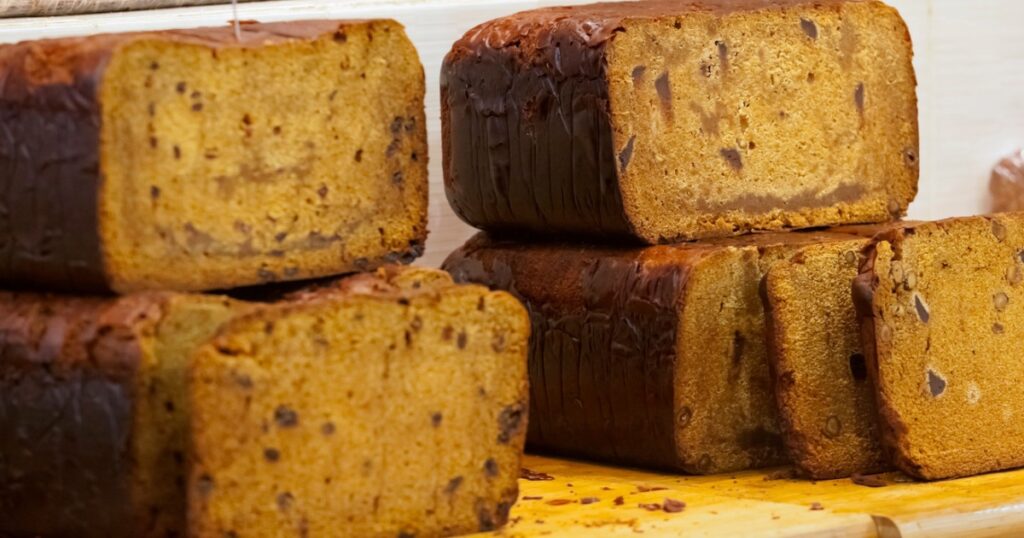
Originating from the Alsace region, this bread is laced with spices like cumin and is fermented slowly to develop its flavours. It’s a bread that pairs exceptionally well with the region’s famous sausages and meats.
Pain Complet à l’Ancienne
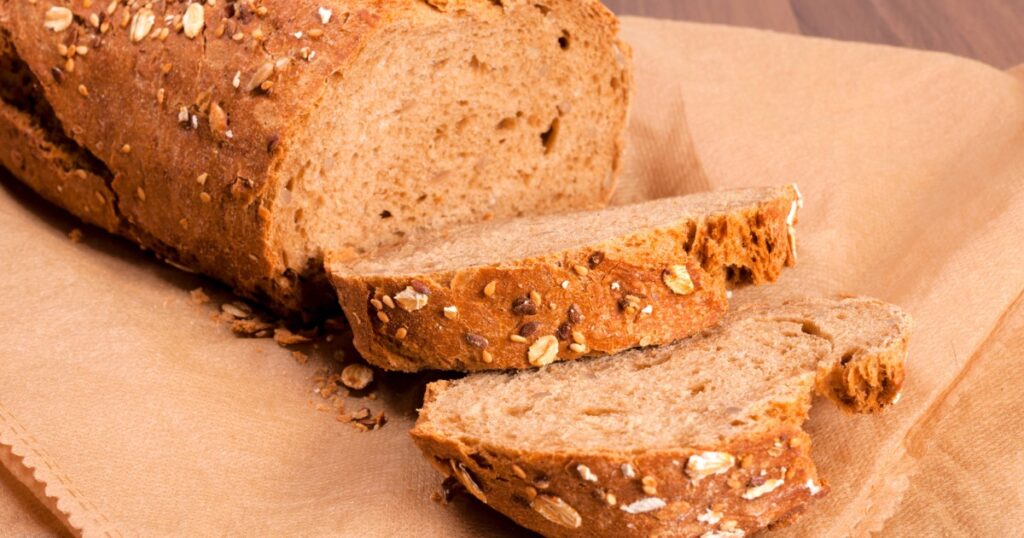
This is an old-fashioned whole-grain bread that is often made with a sourdough starter. It has a dense, chewy texture and a crust that is almost caramelised, offering a completely different eating experience.
Pain Viennois
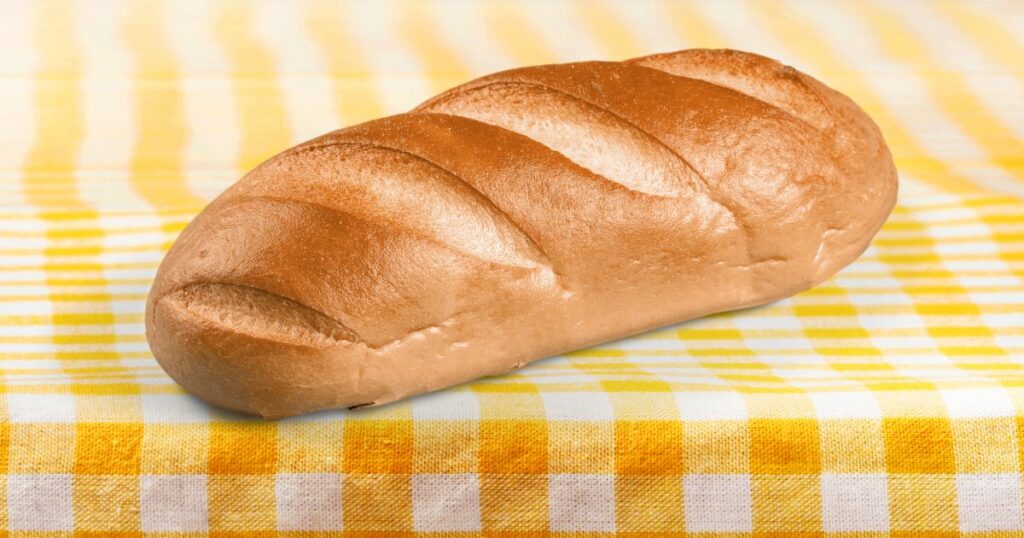
Despite its name suggesting Austrian origins, Pain Viennois has been fully adopted into the French bread family. It’s a soft, slightly sweet loaf often enjoyed at breakfast and sometimes contains chocolate chips or raisins for added flavour, the most common form is the baguette viennoise.
Conclusion
French bread is more than just a dietary staple; it’s a culinary icon that spans a broad spectrum of flavours, textures, and forms. From the crusty Baguette to the delicate Brioche, from rustic regional specialities to lesser-known culinary gems, French bread encompasses a rich culinary landscape that promises a delightful experience in every bite. So the next time you find yourself in a French bakery, don’t just stop at the Baguette—venture out and explore the incredible variety that French bread has to offer. It’s not merely food; it’s a celebration of French culture, tradition, and most importantly, the joy of simple yet sophisticated flavours.
𐡸 𐡸 𐡸 𐡸 𐫱 𐡷 𐡷 𐡷 𐡷
Frequently asked questions
No, French bread comes in a variety of flour types, including wholemeal (‘Pain Complet’), multi-grain (‘Pain aux Céréales’), and even rye (‘Pain de Seigle’). Each type of flour contributes to the bread’s flavour and texture.
In France, the “Décret Pain” (Bread Decree) of 1993 sets strict regulations for the production of French bread. For example, genuine ‘French bread’ must be free from preservatives and can contain only flour, yeast, salt, and water.
The absence of preservatives and the high moisture content in most French bread types lead to a shorter shelf life. This is why many French households buy fresh bread daily.
The ‘crumb’ refers to the internal texture of the bread. In French bread, a good crumb is usually soft and airy with well-distributed, irregular holes. It’s a significant quality indicator and is achieved through proper fermentation and baking techniques.
